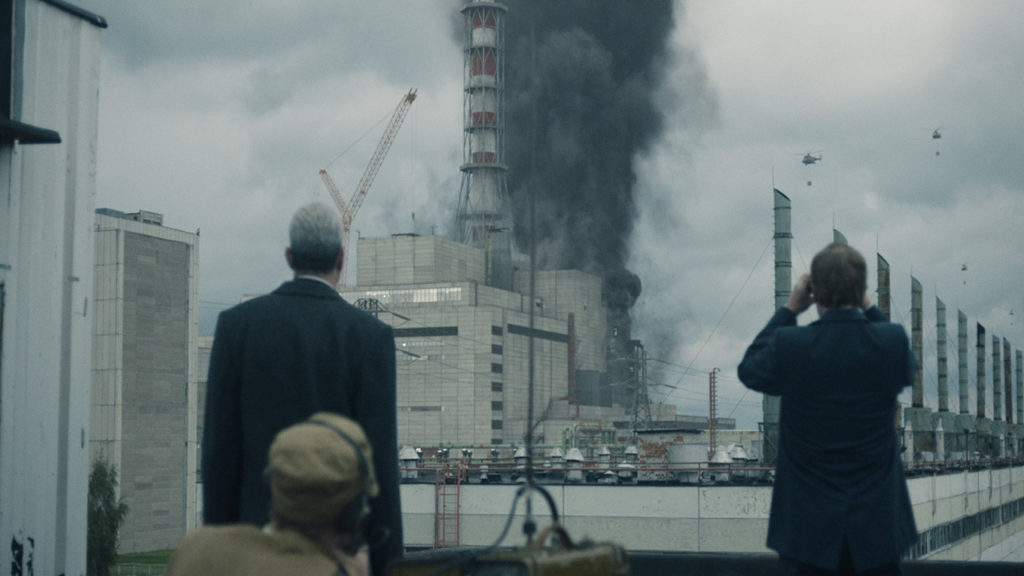
HBO’s Chernobyl, a web mini-series that first premiered on 6th May this year, has finally had its season finale with the last episode being broadcast on 3rd June, almost a month after the leading episode captivated audiences across the globe. Web series are produced by the bulk today, and not many among them are worthy of commendation. Chernobyl, however, is different: it strikes an instant chord with its viewers not only for the accurate portrayal of the catastrophe that befell the Soviet State, but also for the gripping display of how the inter-warped lives of plant workers, their families, and several more innocent far and wide, were ripped apart in no time. Their fate, as they say, was sealed at the twenty-third minute past one in the jinxed night of April 26, 1986.
The backdrop of Chernobyl is set in Pripyat, located in modern-day Ukraine. The very first episode introduces the audience to the horrific disaster. The juxtaposition of pleasure and pain is painted brilliantly- while men at the plant are shedding their sweat to realize the gravity of the adversity, innocent adults and children outside marvel at the brilliant glow of blue light that emanates from the fourth reactor, which blew its roof off. Little did they know that their lives would be taken for a toss from the excessively high amounts of radiation that came alongwith. The story takes a steady turn from there over the span of the next three episodes, revealing the intricacies of the Soviet state, and the immense valour of the scientific community to reclaim and clean up as much as would be possible. Every episode is timed approximately to an hour worth of content, but leaves the mind with questions, hunting for more.
Chernobyl succeeds not only in encompassing the story of the man-made calamity of panoramic proportions but also bringing to light how Soviet politics made matters worse. Nationalist pride ensured harbouring a generation of flawed nuclear reactor designs, with attempts to publicize the glaring loopholes being censored by the State. Chernobyl is a raw tribute to those gallant few, who despite being pinned by severe adversities, fought for the justice, and more importantly safety, of people across the world today. Characters were not fictionalized, this added to the realism of the show. The primary challenge of any historical drama is to encapsulate the hordes of people involved, and Chernobyl succeeds by retaining viewer interest taut and straight through the characters of Ulana Khomyuk, Lyudmilla Ignatenko, and many more. Their personas were reflective of their community at that hour of gloom; while Ulana Khomyuk represents the case of several independent scientists, that of Ignatenko represents the hapless pain of the multitude- people who had to pay the price for sins so great that they had never committed in the first place.
Statistically, Chernobyl seems to have shattered all past records for a TV show, possibly going on to become the highest rated TV-show (IMDb) of all time! A weighted mean of the reviews obtained after each episode puts the overall rating at a stellar 9.7/10. What is more interesting is the fact that each episode of the series was rated by viewers above 9.5, a unique streak when it comes to such shows. The Economist calculates that the probability that any show would maintain a consistent 9.5+ rating over a stretch of four episodes is a meagre 0.4%. For reference purposes, only the final four episodes of Breaking Bad had matched the feat that is now in Chernobyl’s arsenal.

Viewing interest rates in India also grew exponentially during the period of broadcast, registering a steep hike in the Google search trends.

